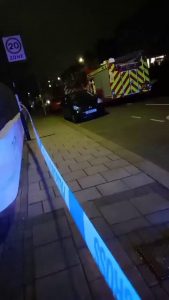Two drones laden
with explosives crashed into India’s Air Force base in Jammu on June 21. This
was the first-ever drone attack in India. While drones have been used for
terrorist activity for nearly a decade, the attack brought to light the
emerging threat of the use of drones in terrorist attacks in this part of the
world.
Here’s an overview
of how drones came to be used by terrorists as well as militaries, the emerging
technologies and ways to guard against such attacks in the future.
What are
drones and how do they work?
Drones, or Unmanned
Aerial Vehicles (UAVs), are remotely controlled devices that can fly at very
high altitudes. The best drones often come with ‘collision avoidance systems’
which have sensors that can scan surroundings and help avoid obstacles.
Also Read | Pakistan among 14 countries in US’ child soldier recruiter list
What are
drones used for?
As the technology
becomes more accessible, drones have come to be used for various purposes from food
delivery to aerial mapping of agricultural land.
How were
drones weaponized?
Made of light
composite materials, drones can carry a lot of weight. The first known weaponized
use of drones was by the US Military who demonstrated how drones can be used to
attack enemy forces.
Over the last
decade, terrorist groups have found access to drones.
According to a report
published by Association of the United States Army (AUSA), the Islamic State
made the first successful use for drones for terrorist activity. Hezbollah,
active in Palestine and Lebanon, Houthi rebels and several terror groups in Pakistan
are known to use drones.
Also Read | Drone spotted inside Indian High Commission in Pakistan, India objects
How to guard
against drone attacks in future?
As conventional
radar systems are not equipped to detect drones, border forces in India largely
depend on eyesight to spot drones and then shoot them down. But after the
attack in Jammu, an anti-drone system has been installed at the Indian Air Force station.






